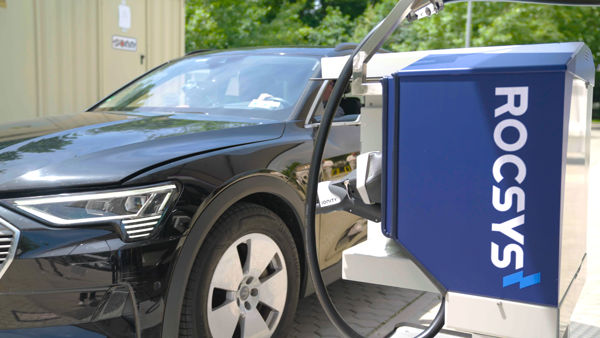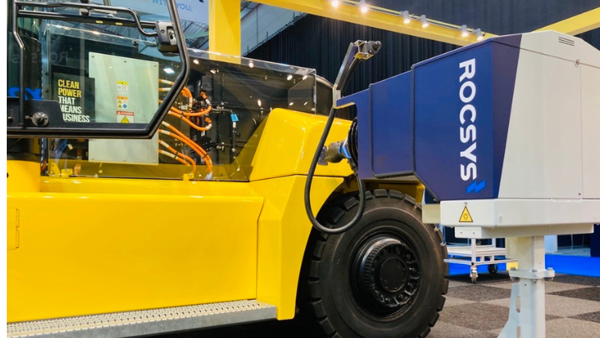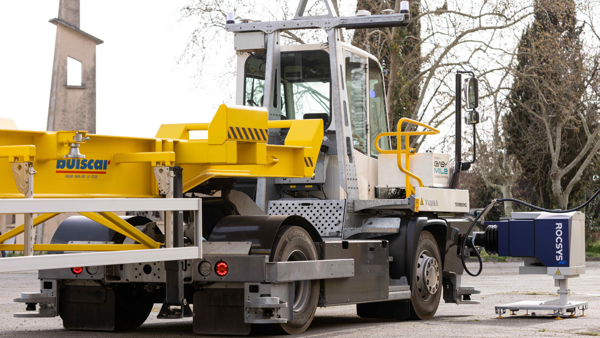
August 05, 2024
Ports are dynamic operations, where a wide range of different tasks must happen, often across multiple shifts and under tight schedules. This means ports and terminals rely on a wide range of different types of vehicles and equipment to meet intense demands. At the same time, many ports are introducing electric vehicles into their fleets to help meet emissions goals and streamline operating costs.
This change presents new opportunities for original equipment manufacturers (OEMs). But, as a vehicle OEM, are you ready with the solutions and options your customers need?
The move towards electrification in ports has already begun. As more ports look to supplement or even replace their existing fleets with electric vehicles, vehicle OEMs are developing innovative new electric versions that can meet the rigorous demands of port logistics without sacrificing efficiency.
Are OEMs ready with the charging options ports are asking for?
While more OEMs develop new electric vehicles and equipment, they may not have considered if they are prepared for the range of charging options that the market, and customers, will need now and in the future.
Charging infrastructure and processes are a key consideration for ports in their journey to electrification. First, they must have sufficient grid capacity to charge large numbers of vehicles, alongside the required space and facilities to do so. Ports also need the correct chargers for the different equipment types. Most will seek standard CCS1 or CCS2 connectors on equipment to enable the same chargers to be used across the whole fleet.
Then there is the question of carrying out the charging itself and doing so efficiently and safely. Planning a charging schedule is the easy part. What many OEMs may not realize is that vehicle operators may need more than a simple training course to learn how to charge vehicles. Operators need to remember to charge vehicles the right way every time or potentially risk a dead battery, which can have a serious impact on port operations.
So, if operators can’t just ‘plug in’ their vehicles as needed, what is the alternative that will enable a smooth transition to electric vehicle fleets?

OEMs are adding handsfree charging as an option
Here’s where hands-free, autonomous charging provides a solution. For example, hands-free Rocsys charging can enable vehicle operators to simply park their vehicle alongside a charger, which then automatically begins the charging process. When the charging cycle is complete or the vehicle needs to go back in operation, the charger will disconnect from the vehicle, so it is ready to use again – all without the effort from the operator.
This brings the benefits of compliance with safety guidelines, alongside the prevention of human error which could otherwise lead to downtime. The Rocsys API can also automatically alert Rocsys to any charging issues, so that remote interventions can be made, preventing further disruption. And since Rocsys autonomous chargers are design-agnostic, they integrate with all current charging platforms like CCS and NACS.
Manufacturers such as Hyster, Terberg and Taylor are among the vehicle OEMs that are already working with Rocsys to deliver port equipment with ‘Rocsys ready’ charging options. To remain competitive in this space and extend your customer base, now is the time to explore adding hands-free charging as a further option for your electric vehicle portfolio.
Rocsys is an industry leader in autonomous charging and has worked alongside both vehicle OEMs and their customers to develop hands-free charging solutions for a variety of markets and applications. To learn more about Rocsys and how autonomous charging can benefit port operations, drop us a line at our contact page.
Contact us to learn more about hands-free charging or schedule a meeting with one of our experts.
August 05, 2024
July 17, 2024
June 13, 2024
June 12, 2024
April 16, 2024





